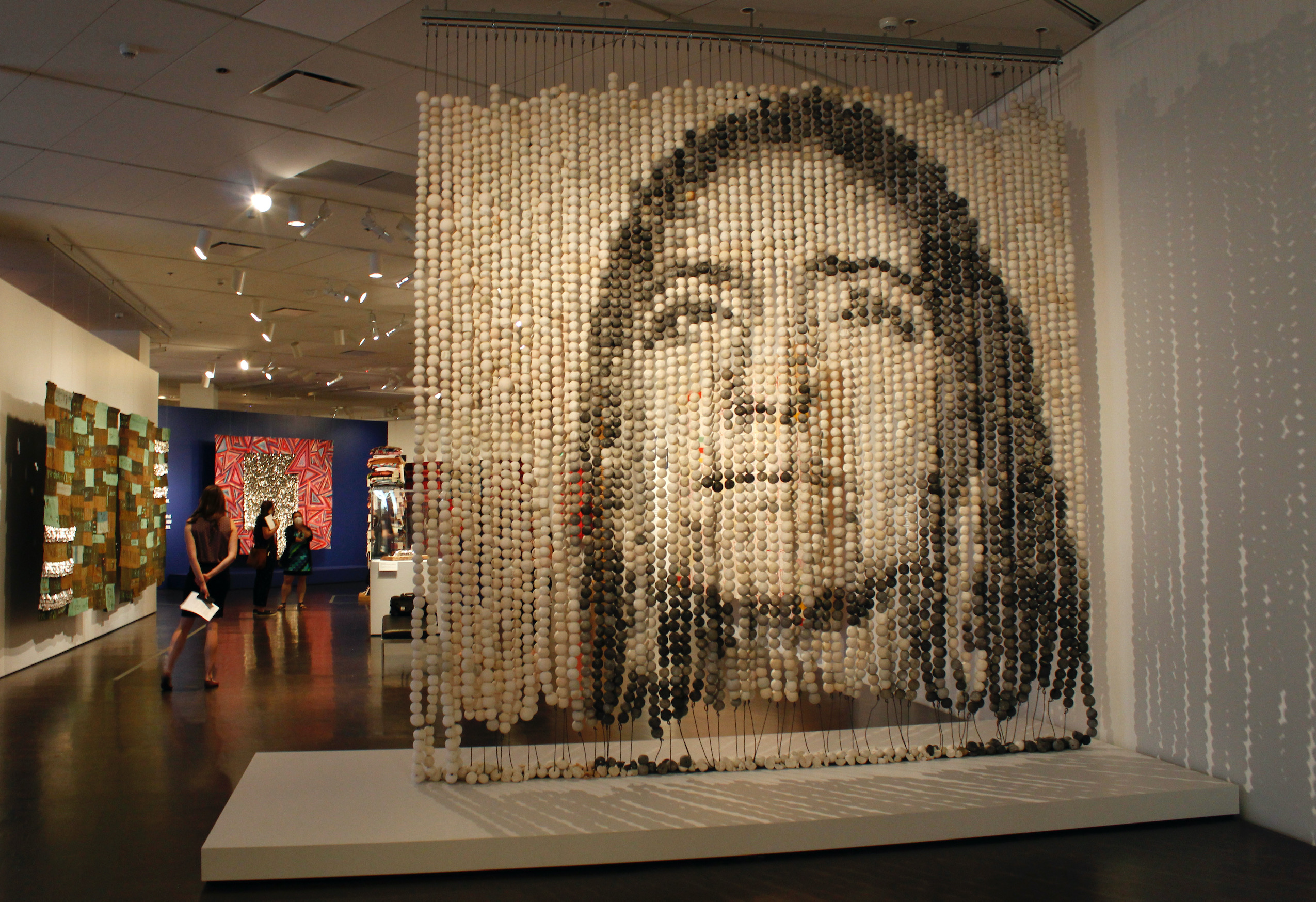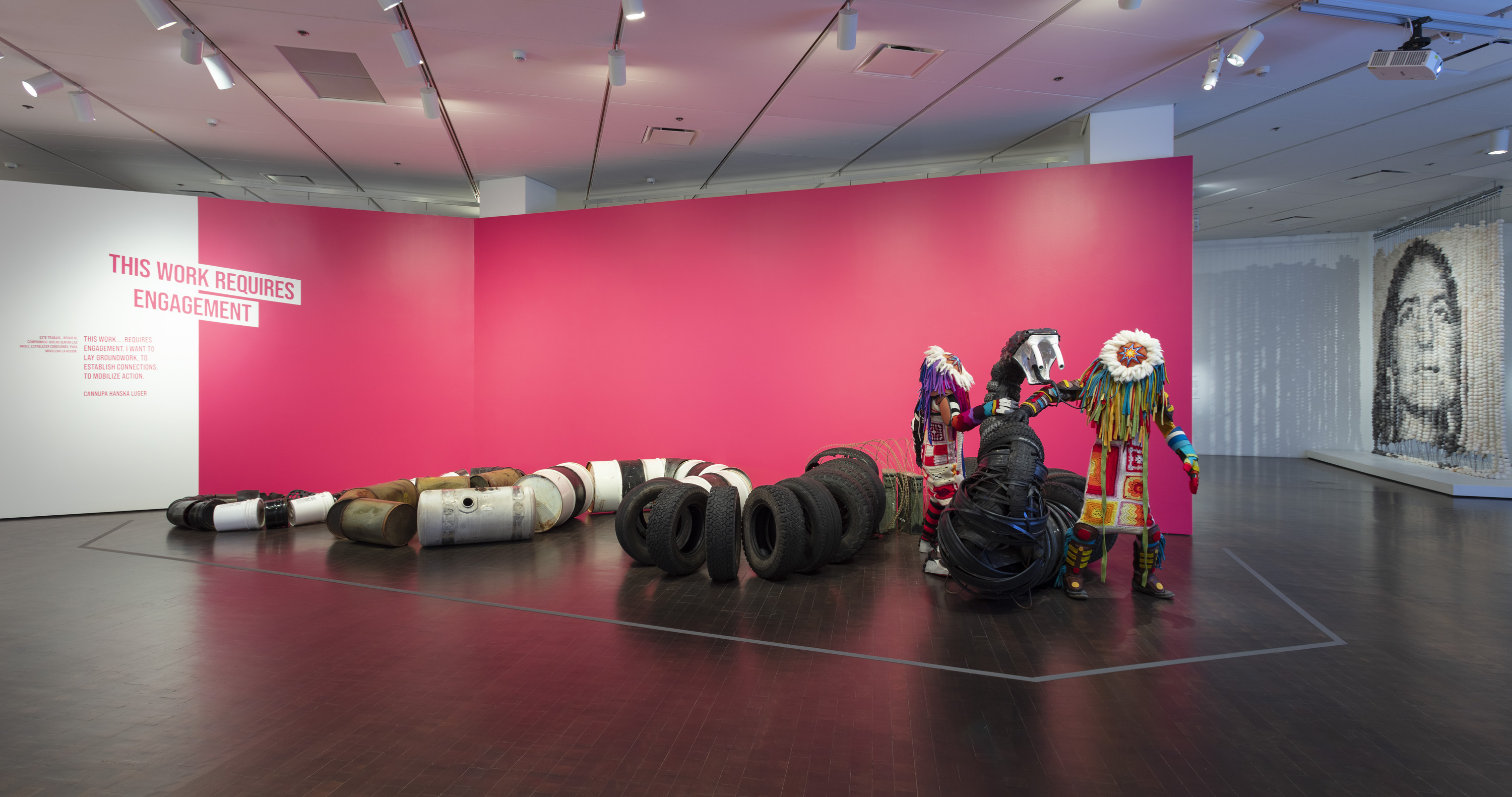“The works are tangible, but more importantly, they are memories of collaborations that show us how to come together and take part in something greater than ourselves,” are the words imprinted on the walls of the new Each/Other exhibit at the Denver Art Museum, which debuted on May 23.
The kind of thinking that emphasizes art as an ongoing social process, rather than an object, is what Marie Watt and Cannupa Hanska Luger bring to their collaboration.
The two contemporary indigenous artists emphasize social engagement in projects, relying on contribution from others to instill a deeper, inclusive meaning and longevity to art. Addressing cultural milieus, environmental and social justice issues are pillars to their work.
Raised on the Standing Rock Reservation in North Dakota, Luger is well-known for his Mirror Shield project: a protest response to the Dakota Access Pipeline. He posted videos on social media instructing participants on how to build mirror shields to use for frontline actions and to protect the waters at Standing Rock.
In Every One (2018), over 4,000 ceramic beads pay homage to the 2016 photograph Sister by Kali Spitzer. The project commemorates victims of the widespread cases of missing indigenous women, young girls, trans and queer communities (MMIWQT) throughout the United States and Canada. Similar to his Mirror Shield process, as a call to action, Luger invited participants to make two-inch clay beads through instructional videos, with each bead representing a lost individual.

Photo by Hilal Bahcetepe.
On This is Not a Snake (2017) – an analogy to the ongoing climate catastrophe – Luger said: “That myth [of snakes terrorizing humans and bringing the end of time] has been presented multiple times in our stories. First with the train, then with the oil pipelines. I felt like all of this was industrial. It can demonize something other than us.” Using waste from his own projects – like white pales used to make clay slip and old tires – Luger hopes that by acknowledging our own contribution to environmental exploitation, we can take accountability for the consequences.
An alumnus of the Denver Art Museum’s 2013 artist residency program, Watt focuses on social bonding and storytelling in her work. A citizen of the Seneca Nation, Watt intersects history, indigenous teachings, feminism and biography to engage cross-disciplinary conversations about connection, culture, time and place. Her collaborative sewing circles – many of them on display – invite open conversations, inviting participants to stitch meaning into each fabric, culminating projects like Butterfly (2015) and Companion Species (2017).
Watt’s Blanket Stories sculpture had participants from 21 states that contributed blankets attached to a meaningful story. It led to a 105-blanket tower that builds up to the sky, a tribute to a Seneca creation story of the Sky Woman who plunged to earth and connected the two realms.
“A lot of people shared stories about the pandemic,” explained Watt, “So I think it’s a sculpture that really speaks to this moment. In regard to thinking about pandemics, it’s important to acknowledge that indigenous people were impacted by diseases and pandemics early on and that it decimated many Native communities. When I think about pandemics in my lifetime, blankets were also used to memorialize the stories of people who were lost due to the AIDS pandemic.”
For Each/Other, Watt and Luger collaborated with participants to introduce a massive she-wolf sculpture covered in bandanas donated from over 850 participants. Intermingling the symbolism of face coverings during the pandemic, kinship, vulnerability and connection, Watt’s said that the sculpture represents something more than just a collaborative art installation. “It’s really meant to be a reflection of not only our relatedness to one another but also to animals and the environment.”
“Within the last, maybe, 1,000 years, we’ve focused on art as being an object and removed it from its process and its being. We’re not maintaining culture within these spaces, we’re preserving it,” said Luger. “Art is one of these wonderful conduits that can move through time, through generations and move through language barriers and share ideas around culture and concepts.”
Each/Other is on view at the Denver Art Museum until August 22, 2021.
All photography provided by the Denver Art Museum unless noted otherwise.




